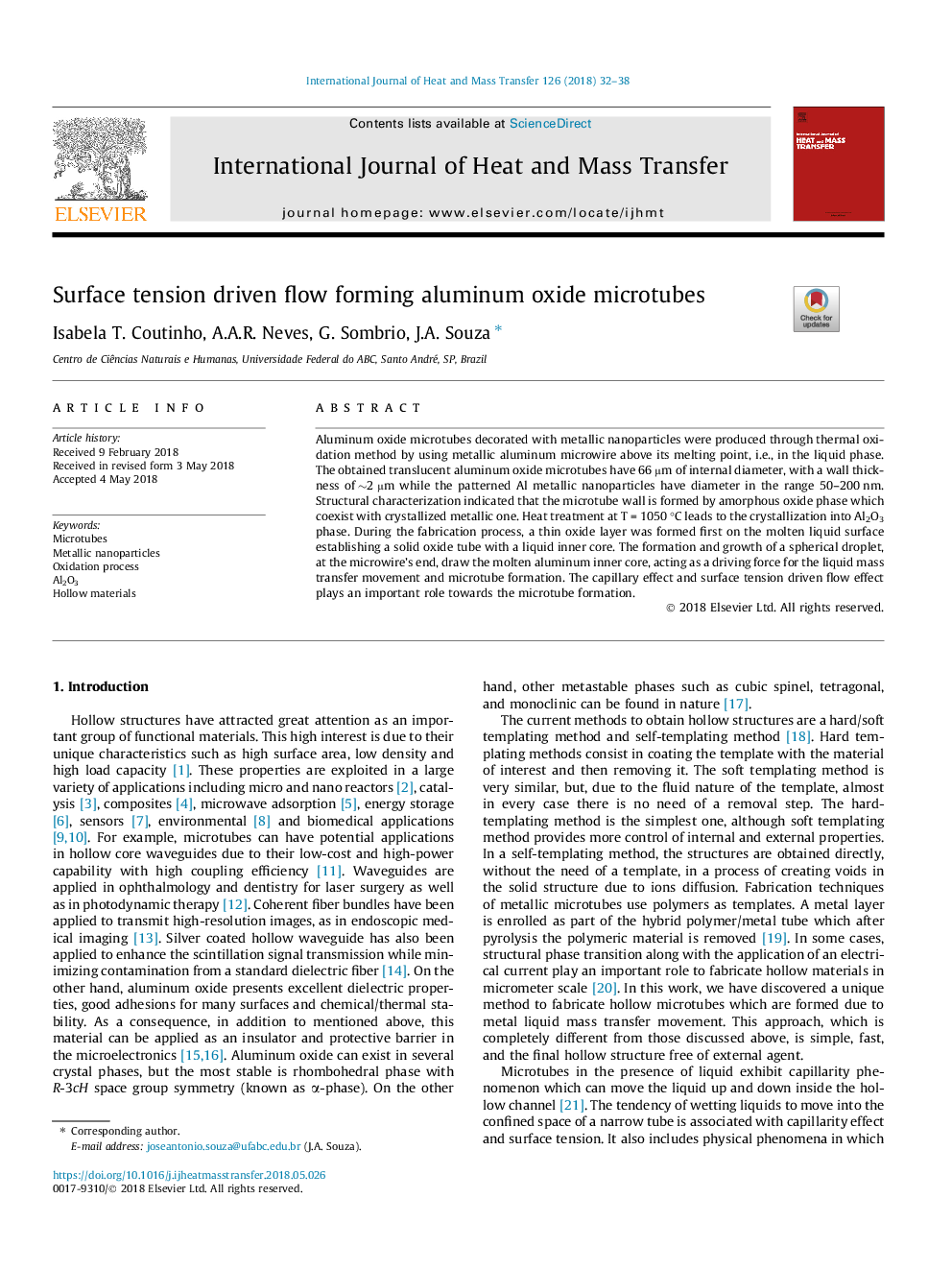| Article ID | Journal | Published Year | Pages | File Type |
|---|---|---|---|---|
| 7053950 | International Journal of Heat and Mass Transfer | 2018 | 7 Pages |
Abstract
Aluminum oxide microtubes decorated with metallic nanoparticles were produced through thermal oxidation method by using metallic aluminum microwire above its melting point, i.e., in the liquid phase. The obtained translucent aluminum oxide microtubes have 66â¯Âµm of internal diameter, with a wall thickness ofâ¯â¼2â¯Âµm while the patterned Al metallic nanoparticles have diameter in the range 50-200â¯nm. Structural characterization indicated that the microtube wall is formed by amorphous oxide phase which coexist with crystallized metallic one. Heat treatment at Tâ¯=â¯1050â¯Â°C leads to the crystallization into Al2O3 phase. During the fabrication process, a thin oxide layer was formed first on the molten liquid surface establishing a solid oxide tube with a liquid inner core. The formation and growth of a spherical droplet, at the microwire's end, draw the molten aluminum inner core, acting as a driving force for the liquid mass transfer movement and microtube formation. The capillary effect and surface tension driven flow effect plays an important role towards the microtube formation.
Related Topics
Physical Sciences and Engineering
Chemical Engineering
Fluid Flow and Transfer Processes
Authors
Isabela T. Coutinho, A.A.R. Neves, G. Sombrio, J.A. Souza,
